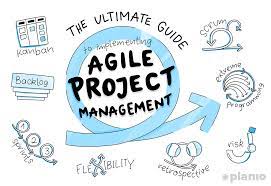With technological advancements and the need to make spontaneous changes, business organizations have now adopted the agile methodology. Undoubtedly, the onset of the global pandemic has led to a decline in business productivity and sales. However, 93% of companies that adopted the agile framework survived better than those that didn’t.
As per the KPMG Global Agile Survey of 2019, more than 68% of business organizations claim that one of the fundamental factors that led to the adoption of the agile framework is fast product delivery. However, to enhance productivity, startups are now switching to the usage of agile roadmaps.
In essence, a roadmap is actually an actionable plan that defines a product’s evolution over time. In the case of agile roadmaps, the most prominent features include adjustments that can lead to changing estimates (if needed) and short timelines. Moreover, it also allows constant software testing and enables the team to have a vision that extends beyond the existing project.
While the agile roadmaps are primarily designed to have an idea of the product strategy, they are also equipped to handle changes. For instance, change in value propositions or development in the competitive space is solvable with agile roadmapping. Moreover, with an agile roadmap, startups can now make well-informed decisions while prioritizing the phases of the project accordingly.
The agile framework appeals to business organizations due to its iterative and flexible approach. Here, one can deliver quick results while allowing space for changes constantly. With valuable client feedback and integration, companies can now develop better products. However, building an effective agile roadmap is of paramount importance.
There are various steps that one must follow to develop an agile roadmap starting from:
The foremost step to creating an effective agile roadmap is to opt for a reliable strategy. Keep in mind that this strategy must align with the objective and vision of the product. Here, strategic roadmapping defines exactly what you want the product to be within the next quarter in a given set of metrics. When it comes to vision, it must be clear that you are solving a particular problem using optimum strategies.
The strategic themes, also known as initiatives, help in attaining the goals of the project. These are further divided into user stories and features. When you define the strategic initiative, a detailed explanation of the work is essential to getting the pre-set goals. Moreover, it is also a great way to communicate the strategy roadmap to the stakeholders. With this, you can simply say the broader aspects and not delve into the smallest detail.
The next step is to ensure that the agile roadmap is perfect for cross-functionality. In most cases, smooth communication between companies and customers is a must to develop the desired product. Moreover, a reliable collaboration of the development and business sections is also vital.
Building an agile roadmap definitely requires input from other departments, even with those that work traditionally without the agile framework. In order to create the best agile roadmap, data from all departments are crucial.
The crucial aspects of an agile roadmap – objectives, visions, and initiatives offer individuals in charge valuable information on what to prioritize the most. They can now break down the large themes into features. After that, the development team can further divide it into estimated scope, technical needs, etc. This leads to a backlog that consists of user stories and features that tie with the product strategy with ease. Making sure that the product visions remain aligned with the roadmap is crucial for creating desired products.
Source : https://www.mikegingerich.com/blog/business-roadmap-ultimate-guide-for-start-ups-switching-to-agile/









